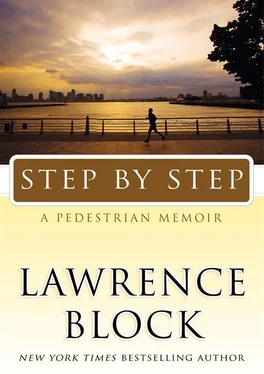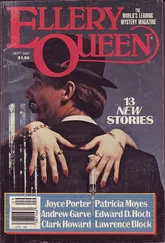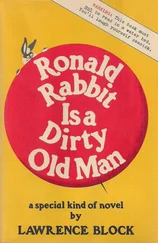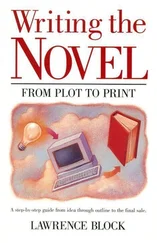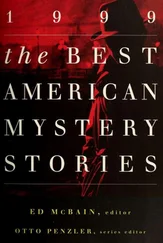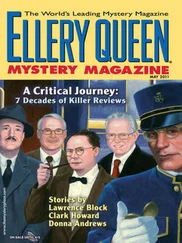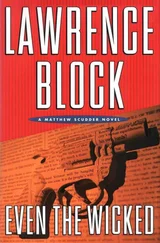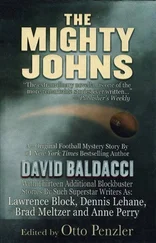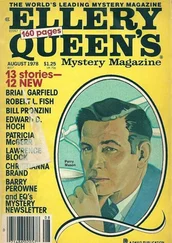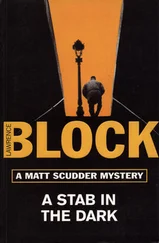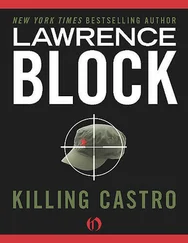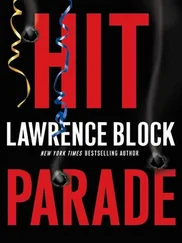Lawrence Block - Step by Step
Здесь есть возможность читать онлайн «Lawrence Block - Step by Step» весь текст электронной книги совершенно бесплатно (целиком полную версию без сокращений). В некоторых случаях можно слушать аудио, скачать через торрент в формате fb2 и присутствует краткое содержание. Год выпуска: 2009, ISBN: 2009, Издательство: William Morrow, Жанр: Биографии и Мемуары, Юмористические книги, на английском языке. Описание произведения, (предисловие) а так же отзывы посетителей доступны на портале библиотеки ЛибКат.
- Название:Step by Step
- Автор:
- Издательство:William Morrow
- Жанр:
- Год:2009
- ISBN:978-0-06-172181-6
- Рейтинг книги:3 / 5. Голосов: 1
-
Избранное:Добавить в избранное
- Отзывы:
-
Ваша оценка:
- 60
- 1
- 2
- 3
- 4
- 5
Step by Step: краткое содержание, описание и аннотация
Предлагаем к чтению аннотацию, описание, краткое содержание или предисловие (зависит от того, что написал сам автор книги «Step by Step»). Если вы не нашли необходимую информацию о книге — напишите в комментариях, мы постараемся отыскать её.
bestselling author comes a touching, insightful, and humorous memoir of an unlikely racewalker and world traveler.
Step by Step — читать онлайн бесплатно полную книгу (весь текст) целиком
Ниже представлен текст книги, разбитый по страницам. Система сохранения места последней прочитанной страницы, позволяет с удобством читать онлайн бесплатно книгу «Step by Step», без необходимости каждый раз заново искать на чём Вы остановились. Поставьте закладку, и сможете в любой момент перейти на страницу, на которой закончили чтение.
Интервал:
Закладка:
I figured I could do it. And, like that first race in Orchard Park, it was a long way from New York, in a city where nobody knew me. If I screwed up, who’d know?
As 1981 got under way, I increased my training mileage. By this time the city had closed the old West Side Highway, an elevated stretch of road that had begun to crumble and was scheduled for demolition. For now, though, there was a stretch of it in Lower Manhattan, extending from the Battery to Fourteenth Street, that was closed to cars but open to runners.
(And to roller skaters, too. One time I was up there on the empty highway, heading north and knocking off the miles, when two southbound skaters hove into view. As they came closer I saw they were a man and a woman, and as they drew abreast, so to speak, the woman’s face lit up with a blinding smile even as she opened her shirt wide to show me her breasts. Then they were gone, and I never saw them again, though I never entirely lost hope until the city knocked the highway down.)
I trained every day, upping my mileage each week, as recommended. And I raced every weekend, which was manifestly not recommended. But the club kept scheduling races and handing out T-shirts, and I couldn’t resist.
The longer races were probably a good idea, preparing me to go the distance in London. The shorter races, four and five and six miles, were probably not a good idea, but they didn’t seem to be hurting me. And I don’t know that they did me any damage, nor did the long miles of training.
I was averaging nine-minute miles in the shorter races, and my time wasn’t that much slower in the longer efforts. I logged 1:28 in a 15K race, 2:01 at 20K. On February 8, my log tells me, I covered 25 kilometers in two hours and forty-five minutes. I remember that race, and I recall that I was in pain during it, but I finished it. That may have been a mistake, but it was nothing compared to the mistake I made the following week during a training run.
I was on my way to the West Side Highway, and as I ran across West Street toward the ramp leading up to the elevated roadway, I put a foot wrong and did something bad to my right knee. It hurt — Christ, it hurt — and if I had it to do over again I’d stop then and there, walk slowly and carefully home, ice the knee, take the rest of the week off, and then start training again, slowly and carefully.
That’s not what I did.
Instead, I forced myself up the ramp and onto the highway, and I ran for a while. And by the end of that day’s workout my knee hurt a lot worse than it had before, and it still hurt when I got home and when I woke up the next morning. For a day or two I kept trying to run through it — because I had a marathon coming up, and I needed to get the miles in, didn’t I?
You know, you’d expect this sort of stupidity in a kid, but I was forty-two years old at the time. What the hell was I thinking?
Whatever i was thinking, after a couple of days I had to stop thinking it. My knee was really hurting, and every time I went out and ran I only managed to make it worse. It would fool me from time to time, because it only hurt when I ran. The impact of my weight coming down on a bent knee was extremely painful, but when I walked I experienced at worst a slight ache and, most of the time, no pain whatsoever.
At first all I could think of was that the London Marathon was a washout. The entry fee I’d paid was really the least of it. I don’t remember how much it was, but it couldn’t have been more than twenty-five dollars or so. The several hundred dollars I’d paid for a plane ticket represented a more substantial loss. But it too was less significant than the fact that I’d really been looking forward to this experience, and now my own ignorance and stupidity was going to deprive me of it.
Unless I just went and walked it.
At that first race in Orchard Park, my feelings toward the race’s single walker had hovered somewhere between puzzlement and contempt. Walking, after all, was what I’d done before I taught myself how to run. In a race, where the object was to get from the start to the finish as rapidly as possible, why would someone deliberately select a slower gait? What sense did that make?
Since then I’d learned to view walkers differently. There was a walker contingent in every NYRR race, and the first three across the finish line qualified for trophies. They were not just walkers, they were racewalkers, and when I watched them I had to admit they looked good. There was something amusing at first glance about that hip-wiggling form, but it didn’t take long to get used to it, and once you did you stopped seeing it as funny-looking.
More impressive, though, was how racewalkers looked at the end of a race. The slower and less well-conditioned runners tended to reach the finish line looking like the wreck of the Hesperus . Their backs would be curled in one direction, their necks bent the other way in a heroic attempt to hold their heads up. They held their limp hands up in front of them like dogs begging for a treat. Many of them really looked awful, and if those back-of-the-packers were the only runners a person ever saw, it would be hard to convince him that the enterprise was good for you.
The racewalkers, on the other hand, strode toward the tape with their heads held high, their posture impeccable, and their arms swinging resolutely at their sides. They might be finishing days behind the leading runners, but they’d cross the line ahead of many of the real schleppers, and they’d look damn good while they did so.
So I’d come to respect the racewalkers. I didn’t want to be one, but that didn’t mean there was anything wrong with them or what they were doing.
If i could racewalk, I could go on training over the next several weeks without further damaging my knee. I’d stay in condition, and if my knee mended quickly enough, I might be able to run London after all. Failing that, maybe I could walk it.
But first I had to learn how to racewalk.
I’d had to learn to run, too, during those early laps around Washington Square, but I hadn’t needed anybody to teach me. But racewalking was different. It involved a curious stiff-legged stride that never came naturally to anyone, except perhaps an early-stage robot.
Now some people might be capable of picking up the technique of racewalking by watching others and duplicating their movements, but I’d have been as likely to learn to fly by watching a bird. Did I mention that I was the only kid in my kindergarten class who couldn’t figure out how to skip? (I did learn, though, because my mother taught me. Years later, when Mrs. Goldfus shouldered me from fifth to seventh grade, my mother took a certain poetic satisfaction in the fact that the boy who couldn’t skip had managed to skip all of sixth grade.)
Fortunately, I didn’t have to pick up racewalking on my own. Every Saturday morning Howard Jacobson, the chief poo-bah of New York area racewalking, held an instructional class in Central Park, at the very East Side location where most NYRR races began. The classes were free, and all you had to do was show up, which is what I did on the Saturday after I wrecked my knee.
I showed up, along with twenty or thirty others. After a few minutes of basic instruction, we all set out on a six-mile circuit of the park, moving at whatever pace we chose. I wound up walking with a man and woman around my own age, both of whom had done this before. We walked at what the man estimated at a thirteen-minute-per-mile pace, and I pumped my arms and kept my knees locked and seemed to be doing pretty much what everybody else was doing.
I don’t know that it was easy. Compared to runners, racewalkers work harder, go slower, and create more amusement for onlookers in the process. I was putting too much effort into it for it to be easy, seeking to do it correctly, striving to keep up with my companions. By the time we’d got back to where we’d started, I certainly felt as though I’d had a decent workout. But I didn’t feel exhausted, or even as tired as I often did at the end of a brisk six-mile run.
Читать дальшеИнтервал:
Закладка:
Похожие книги на «Step by Step»
Представляем Вашему вниманию похожие книги на «Step by Step» списком для выбора. Мы отобрали схожую по названию и смыслу литературу в надежде предоставить читателям больше вариантов отыскать новые, интересные, ещё непрочитанные произведения.
Обсуждение, отзывы о книге «Step by Step» и просто собственные мнения читателей. Оставьте ваши комментарии, напишите, что Вы думаете о произведении, его смысле или главных героях. Укажите что конкретно понравилось, а что нет, и почему Вы так считаете.
